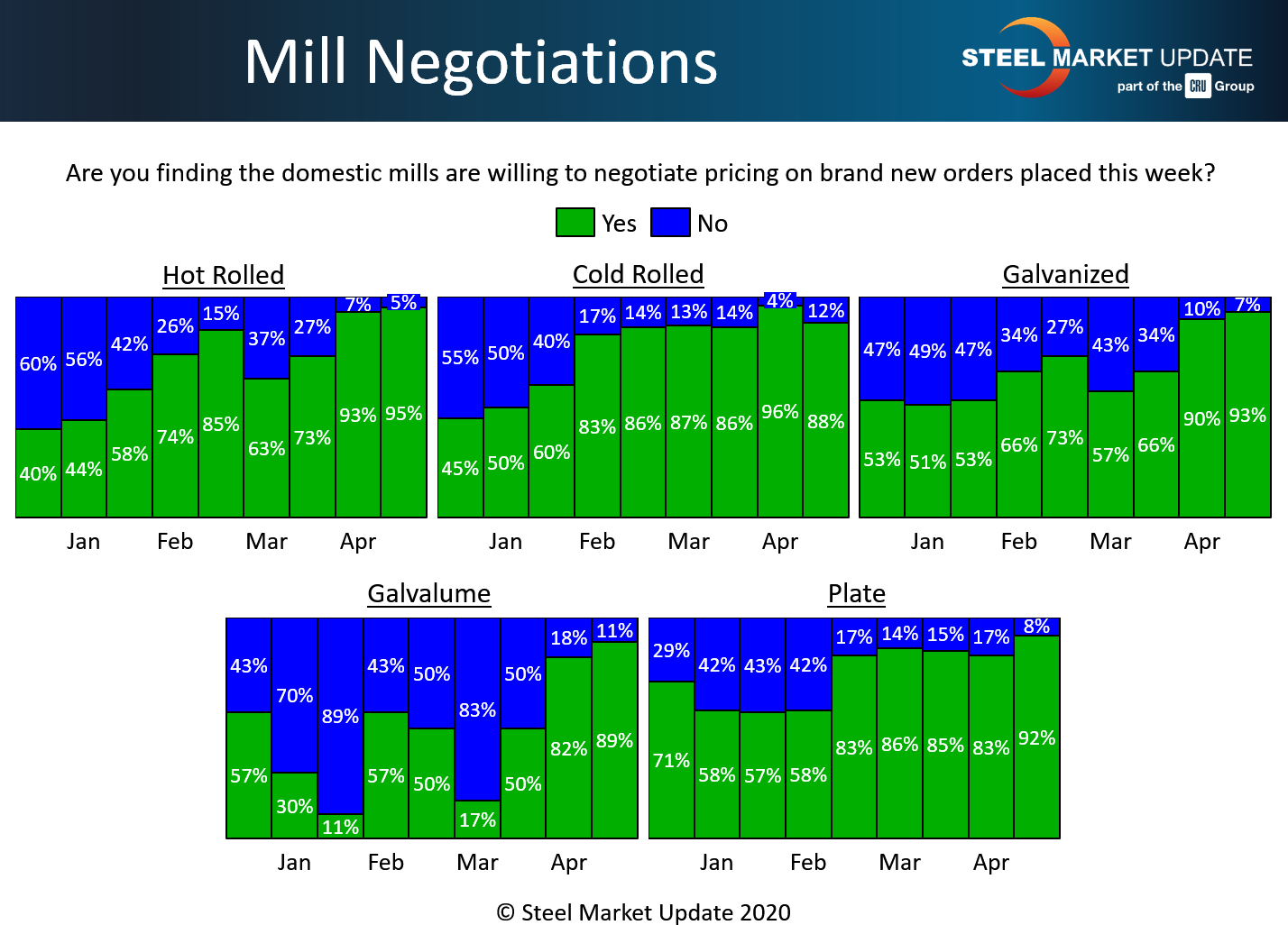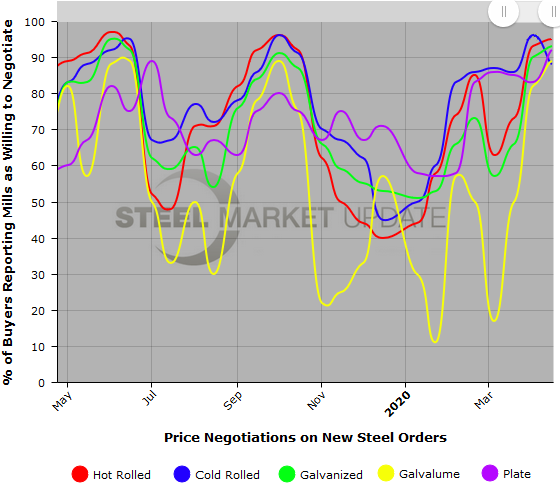SMU Data and Models

Steel Mill Negotiations: More Tons Than Buyers
Written by Tim Triplett
April 16, 2020
It’s a buyer’s market with many buyers sitting on the sidelines waiting for federal and state officials to declare the coast is clear and open up the economy once again. Not surprisingly, steel mills are very willing to negotiate to secure orders in the current low-demand environment. More than nine out of 10 buyers responding to Steel Market Update’s questionnaire this week said the mills are now talking price on all types of products. The percentages have jumped by about 20 points since this time last month, but have stayed about the same over the past two weeks.
In the hot rolled segment, 95 percent of the steel buyers said the mills are willing to negotiate prices on HR, up 22 points since mid-March, but just 2 points since early April. In the cold rolled segment, 88 percent reported the mills willing to talk price, down from 96 percent two weeks ago. In galvanized, 93 percent reported the mills open to negotiation, up 3 points from the 90 percent earlier in April. Similarly, 89 percent said they have found mills willing to compromise on Galvalume prices, up from 83 percent in the last poll.
The tone of negotiations in the plate sector has gotten even more buyer-friendly as about 92 percent said the plate mills are now open to negotiations, versus 83 percent earlier in the month. Just 8 percent said mills are still holding firm on plate prices.
The benchmark price for hot rolled steel dipped below $500 per ton this week and is down by $115 per ton from its recent peak in January. Mills have cut capacity in an effort to sync supply with demand, but it appears there are still more tons than there are active buyers in the market.
Note: SMU surveys active steel buyers twice each month to gauge the willingness of their steel suppliers to negotiate pricing. The results reflect current steel demand and changing spot pricing trends. SMU provides our members with a number of ways to interact with current and historical data. To see an interactive history of our Steel Mill Negotiations data (second example below), visit our website here.



Tim Triplett
Read more from Tim TriplettLatest in SMU Data and Models

SMU Scrap Survey: Sentiment Indices rise
Both current and future scrap sentiment jumped this month, though survey participants reported responses before key trade news was announced.

SMU Survey: Sentiment splits, buyers have better view of future than the present
SMU’s Steel Buyers’ Sentiment Indices moved in opposite directions this week. After rebounding from a near five-year low in late June, Current Sentiment slipped again. At the same time, Future Sentiment climbed to a four-month high. Both indices continue to show optimism among buyers about their company’s chances for success, but suggest there is less confidence in that optimism than earlier in the year.

SMU scrap market survey results now available
SMU’s ferrous scrap market survey results are now available on our website to all premium members. After logging in at steelmarketupdate.com, visit the pricing and analysis tab and look under the “survey results” section for “ferrous scrap survey” results. Past scrap survey results are also available under that selection. If you need help accessing the survey results […]

SMU flat-rolled market survey results now available
SMU’s latest steel buyers market survey results are now available on our website to all premium members. After logging in at steelmarketupdate.com, visit the pricing and analysis tab and look under the “survey results” section for “latest survey results.” Past survey results are also available under that selection. If you need help accessing the survey results, or if […]

SMU Survey: Sheet lead times stabilize, plate contracts
Mill lead times for sheet products were steady to slightly longer this week compared to our late June market check, while plate lead times contracted, according to steel buyers responding to this week’s market survey.
